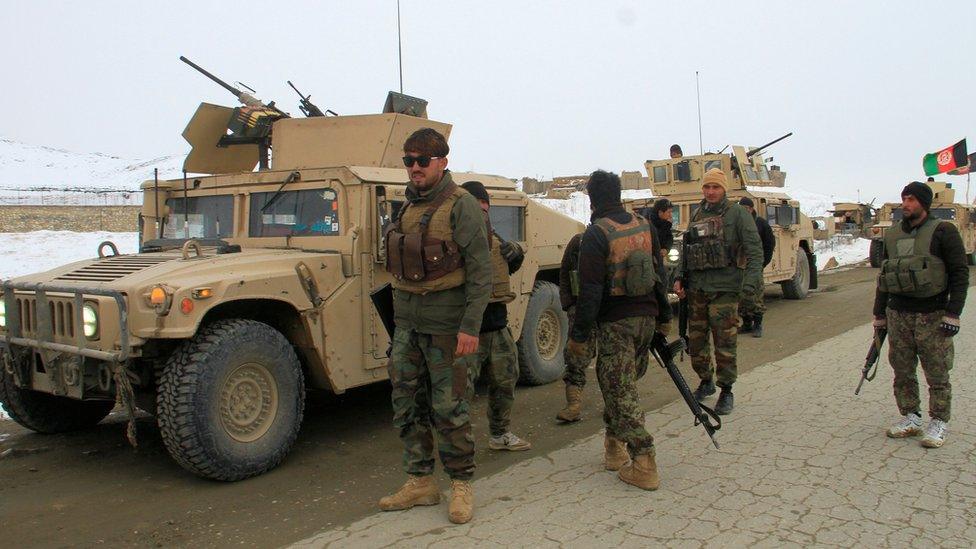Afghan plane crash: US jet comes down in Taliban territory
- Published

Afghan National Army forces have travelled to the site of the crash in Deh Yak district
The US military has confirmed one of its planes crashed in eastern Afghanistan on Monday.
Col Sonny Leggett said: "While the cause of crash is under investigation, there are no indications the crash was caused by enemy fire."
The aircraft crashed in Deh Yak district, Ghazni province, an area with a strong Taliban presence.
It is unclear how many people were on board.
Col Leggett denied Taliban claims that additional aircraft had crashed.
Taliban social media accounts have posted unverified footage showing a burnt-out plane with US Air Force markings.
The video shows a Bombardier E-11A - the type of jet used by the US Air Force for electronic surveillance over Afghanistan.
Afghan authorities had initially said the crash plane belonged to state-owned airline Ariana, but the company quickly said all its planes were accounted for.
While helicopters have proven vulnerable and accident-prone in Afghanistan, the loss of a US fixed-wing aircraft is relatively rare.
But the Taliban are not believed to have the sorts of anti-aircraft missiles needed to bring down a high-flying aircraft.
The plane involved is an E-11A, one of only four in the whole US Air Force.
Essentially it is an adapted Bombardier executive jet, chosen for its ability to fly at high altitude and with extended range. It is packed with electronics: its job is to enable better communications between air and ground forces, and between different types of aircraft operating in difficult terrain or using incompatible data links.
It is a bit like the wi-fi range extender that you install in a room with a poor signal. The aircraft - along with similar electronics mounted on unmanned systems - have played an important role in the Afghan conflict, where the mountainous landscape is a major problem for modern military communications.
- Published29 November 2019
- Published3 September 2021